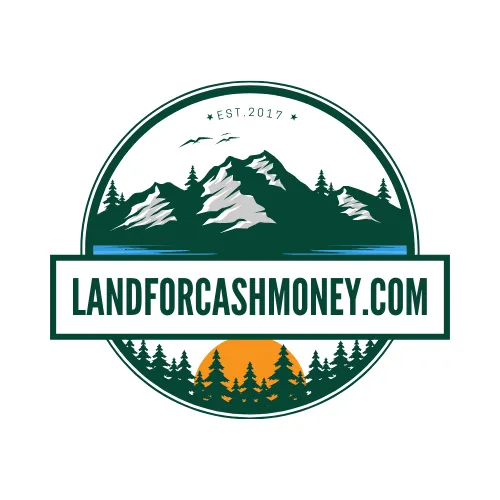
Investing in Vermont Land: A Comprehensive Guide
Vermont, known for its stunning scenery and rural beauty, has become a desirable destination for land investors. The 2022 Census of Agriculture indicates farmland in the state is valued at about $3,920 per acre, a notable rise from prior years. With approximately 1.19 million acres of farmland and a reported annual increase of 2.5% in undeveloped land prices over the last decade, Vermont presents significant opportunities for various types of land investments including agriculture, conservation, and real estate development.
Understanding Vermont's Geographic Landscape
Covering 9,616 square miles, Vermont is both the second least populous and the sixth smallest state. As of 2022, its population stood at 643,077, largely concentrated in the north-central region near urban hubs like Burlington and Montpelier. This demographic distribution affects property demand, with higher value appreciation and demand for homes found in metro areas compared to rural locations.
Investors should pay close attention to these geographical dynamics; properties closer to economic centers often enjoy faster appreciation and higher rental yields, while remote areas may struggle to generate consistent interest or returns. Vermont relies significantly on tourism, agricultural production, and scenic recreational opportunities to sustain its economy. The state attracts over 13 million visitors each year, amplifying demand for vacation properties and rentals in prime tourist locations.
Types of Properties to Consider
The interplay of tourism, rising home prices, and shifting demographics in Vermont has diversified potential investment options in real estate:
- Vacation Homes: These properties, including ski cabins and lakeside retreats, enjoy high demand, enabling owners to earn substantial rental income during peak seasons.
- Residential Rentals: Increasing home prices have led to a growing number of renters opting to live in more affordable regions instead of buying, providing lucrative opportunities for landlords.
- Recreational Land: The popularity of outdoor activities has pushed up demand for recreational plots suitable for camping, hiking, or other leisure pursuits.
- Retirement Properties: Vermont’s serene environment and welcoming towns make it ideal for retirees, creating avenues for building rental units specifically designed for older residents.
- Agricultural Land: With a flourishing local food movement, investment in farmland can be promising, although raw agricultural plots may present challenges in generating rental income.
Analyzing the Market Trends
Several key real estate trends influence Vermont's investment landscape:
- Robust Price Growth: Home values have surged due to heightened buyer competition amid limited supply, presenting profitable resale opportunities.
- Inventory Shortages: A continually low inventory of homes creates barriers for investors seeking viable deals.
- Cash Advantage: All-cash buyers often have an edge in competitive markets, although high asking prices may limit returns.
- Urban Revitalization: Small cities in Vermont, like Barre and Montpelier, are experiencing increasing investment interest, offering opportunities for property rehabilitation.
- Increased New Residents: The influx of remote workers and second-homeowners turning into full-time residents diversifies rental markets in various regions, stabilizing demand.
Weighing Risks and Rewards
Investing in Vermont can indeed be profitable, yet it involves notable challenges. Among the pros are the rapid appreciation of properties and strong seasonal rental demand. However, investors face challenges such as intense competition from cash buyers and potential regulatory restrictions. In addition, remote rural properties can lead to low occupancy rates and inconsistent cash flows.
Steps to Successful Investing
For those looking to invest in Vermont’s complex real estate environment, here are some vital steps to consider:
- Local Insights: Acquire a comprehensive understanding of local markets, as conditions can greatly vary within the state.
- Niche Focus: Choose a specific property type to specialize in, such as vacation rentals or agricultural land, maximizing your investment acumen in that area.
- Reliable Collaborators: Build partnerships with local professionals, including real estate agents and property managers, for informed decision-making.
- Rigorous Financial Analysis: Before making a purchase, ensure that the potential investment promises a positive cash flow, considering all related expenses.
- Network Building: Engage with local investors and industry professionals to uncover off-market opportunities and valuable connections.
Conclusion
Investing in Vermont land can offer remarkable opportunities, driven by the scenic appeal and tourism-driven economy of the region. However, awareness of local regulations, competition, and market conditions is crucial for success. By remaining informed and connecting with local expertise, investors can navigate this unique market effectively.
FAQs
**1. Is investing in vacation rentals profitable in Vermont?**
Yes, strong demand in tourism areas can lead to lucrative returns, but it’s essential to be mindful of local regulations on short-term rentals.
**2. How does Vermont’s capital gains tax affect investors?**
Recent tax legislation imposes capital gains taxes on properties sold within six years of purchase, impacting the net profit for investors looking to resell quickly.
**3. What areas offer the best rental opportunities?**
The Burlington metro area, Montpelier, and growth-oriented small cities like Barre provide strong rental prospects amidst limited inventory.
**4. Should I work with a local or national lender?**
Local lenders typically provide better terms and insights into the Vermont market, making them the wiser choice for investors.
**5. What are winter rental vacancy rates like in rural Vermont?**
Remote properties may see higher vacancy rates in winter months; thus, thorough financial analysis of year-round cash flow is essential.



